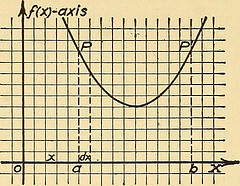Vedic Math Tricks And Number Computation Shortcuts For Easier Mathematics

It was about 1911-1918 when Sri Bharati Krsna Tirthaji rediscovered an ancient mathematical system from the Vedas. This math system was termed Vedic Mathematics. This system involves sixteen word formula or Sutras where all mathematics are based on. The formulas describe how the mind works and how it may be used to direct a student in finding solutions to math problems.
Coherence is the most notable feature of Vedic math. Unlike other systems that teach unrelated techniques, the whole Vedic system entails techniques that are unified and interrelated. For example, the method for general multiplication can be reversed easily to produce one-line division. The method for simple squaring can also be reversed to create one line for finding square roots. In essence, Vedic math composes of easily understood methods that make dealing with numbers more enjoyable and innovative. Difficult problems may be easily solved by Vedic math; which allows you to conveniently make mental computations.
• Percentage equivalents. In this method, fractions have specific equivalents that you can easily use in computations. You may find useful tables containing these percentage-fraction-decimal equivalents. For example, 1/3 may be written in fraction form as 0.33 and in percentage form as 33%. If in a certain problem, you are asked for the answer in 120 x 33%; you may simply substitute 1/3 to 33%. The result would be 120 x 1/3 = 120/3 or simply 40. If you can memorize the entries in the percentage table, then you will find computing number problems easier.
• Sped conversions. In this method, you need to memorize the basic formula for converting km/h into m/s: 1000 m/3600 s or 5/18. If in a problem, you are asked to convert 50 km/h into m/s, the solution would be 50 x 5/18 = 250/18 = 14.
• Time addition. If you are asked to add two hours and 23 minutes to three hours and 46 minutes. What you can simply do is add 223 to 346 to get 569. Regardless of what hours and minutes you are adding, you need to always add to the sum you have gotten. In the example, 569 + 40 = 609 so your final answer will be six hours and 9 minutes.
• Squares of numbers. You need a number near to the number whose squares you are looking for. As an example, find the square of 41. Your solution would be 40 + 41 + 1600 = 1681.
• Easier multiplication. If you need to multiply a nymber by 5, you can just add zero at the end of that number and then divide by two. Example is 126 x 5. Add 0 to 126 so you have 1260; divide 1260 by two and you will have the answer. If multiplying by 25, simply add two zeros and then divide by four. Using 126 x 25 as example: 12600/ 4 to get 3150. If multiplying by 75 multiply by 300 and then divide the answer by four. Again, with the example 126 x 75: 126 x 300 = 37800/4; the final answer will be 9450.
Discover techniques based on Vedic math that will help you in making mental computations with Fun With Figures. Another recommended product on solving number problems using Vedic techniques is Vedic Mathematics Secrets.
Related Mathematics Articles
